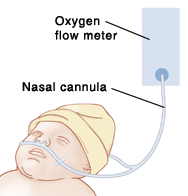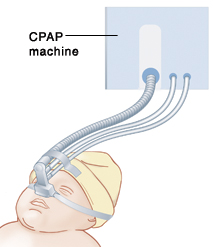Transient Tachypnea of the Newborn (TTN)
Transient Tachypnea of the Newborn (TTN)

How is TTN diagnosed?
A healthcare provider may first listen to the baby’s chest or breathing pattern. A chest X-ray can often detect excess fluid in the lungs and make sure there are no other problems that may be causing difficulty breathing. Healthcare providers can measure the level of oxygen in the baby’s blood with a device (pulse oximeter) taped to the baby’s hand or foot. A blood test may also be done. The pulse oximeter or blood test shows whether the baby needs extra oxygen.
What are the treatments for TTN?
Healthcare providers monitor your baby’s pulse, breathing, and blood oxygen levels. This helps to make sure they are in a safe range. Healthcare providers may give your baby oxygen, using:
A nasal cannula (soft tubes fixed under the baby’s nostrils)
An oxygen hood (a clear plastic box that fits around the baby’s head)
A CPAP (continuous positive airway pressure) machine. This machine pushes a small amount of air continuously into the baby’s lungs. It helps hold open the airways and clear fluid. The air is blown through a mask that goes over the baby's nose or small plastic tongs that goes into the baby's nose. CPAP may be used with or without supplemental oxygen.
What are the long-term effects?
In most cases, TTN causes no complications and clears up within 72 hours. Breast or bottle feeding may not be possible until your baby is able to breathe normally. There are no known long-term effects on your baby’s lungs. Your baby’s healthcare provider can tell you more about your baby’s situation.
Updated:
October 06, 2017
Sources:
Patient education: transient tachypnea of the newborn - the basics. UpToDate., Transient tachypnea of the newborn. UpToDate.
Reviewed By:
Freeborn, Donna, PhD, CNM, FNP,Image reviewed by StayWell medical illustration team.,Lee, Kimberly G., MD, MSc, IBCLC
